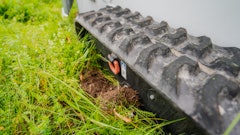
The following are insights from Dan Roche, director of marketing for Briggs & Stratton portable power and cleaning systems.
Pressure washers are designed and manufactured to provide years of reliable use. However, like all power products, it is important to take preventative steps to protect the pressure washer pump and other components from damage before the weather turns cold. All it takes is one early, unexpected freeze to seriously damage a pressure washer pump. That’s why it is so important to take few simple steps to protect your pressure washer from damage and freezing temperatures after you have finished the last of your fall cleanup projects.
The following tips will help pressure washer you protect your investment through the cold weather.
1. Protect Your Engine. An important aspect of properly winterizing a pressure washer is taking good care of the engine. Gasoline goes stale in about 30 days, and stale gas can lead to component failures and costly repairs. Additionally, 90% of all fuel sold in the U.S. is an ethanol blend. Ethanol-blends deteriorate almost the moment they are pumped, and can break down in the fuel tank causing rust, corrosion and varnish build-up. We recommend you use an additive, such as Briggs & Stratton’s Advanced Formula Fuel Treatment and Stabilizer, according to the manufacturer’s directions, to the fresh fuel to protect the engine. Connect the unit to a water source to protect the pump then run the engine for two minutes to circulate the fuel stabilizer throughout the fuel system.
2. Flush Out the System. When putting a pressure washer in storage, it is important that no water or cleaning solution remains in the pump. To start, place the injection tube into a pail of clean water and run the pressure washer on low pressure mode for one to two minutes. Then, turn off the engine and the main water supply. Turn the spray gun of the pressure washer in a safe direction and squeeze the trigger to release trapped pressure. Once the unit cools down, disconnect any attached high-pressure or garden hoses. Drain the water from the hose, spray gun, and nozzle extension. Use a rag to wipe off the hose. Store all accessories and pull the recoil handle about six times to empty the pump of all liquids.
3. Maintain the Pump System. Once all liquids have been removed from the pressure washer pump system, move it to a clean, dry place. Lay down a tarp and make sure you are wearing eye protection. Now, fill the pressure washer with a pump saver additive by connecting it to the pump inlet. This will help prevent rust, freeze damage and keep pistons and seals from drying out. Finally, pull the recoil handle twice to complete the process.
4. Storing Your Pressure Washer. Store your pressure washer in a cool, dry place, cleaned of dirt, grime and moisture.
Taking a bit of time this fall to protect the pump in your pressure washer will ensure the pressure washer will be ready to work when the weather warms.
Check out Briggs & Stratton’s New 3,600 Max PSI / 2.5 Max GPM PRO Series Pressure Washer




















